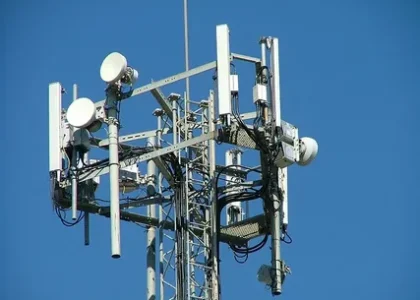Motion stimulation therapy is a type of physical therapy that is used when an event such as a stroke or spinal cord injury occurs, resulting in muscle denervation and paralysis or weakness. Motion stimulation therapy aids in the production of voluntary forces required for the joint moments, allowing for the functional performance of daily tasks.
Motion Stimulation Therapy Market Size was estimated at US$ 1.1 Million in FY 2021, and is expected to expand at a 9.1% Y-o-Y growth rate until 2022, when it will be worth US$ 1.2 Million. During the projected period of 2022 to 2032, the market is expected to grow at a CAGR of 4.1%, reaching US$ 1.8 Million.
Request Sample Copy of Report@ https://www.futuremarketinsights.com/reports/sample/rep-gb-8419
Motion stimulation therapy can help with muscle spasms, pain relief, and inflammation reduction. Motion stimulation therapy also encourages muscle contraction, which helps to prevent muscle atrophy. Motion stimulation therapy can help with Parkinson’s disease, a progressive neurodegenerative disorder that affects the elderly.
Deep brain stimulation is a form of motion stimulation therapy that is used to treat Parkinson’s disease. The most common surgical treatment for Parkinson’s disease is deep brain stimulation. Advanced motion stimulation therapies, such as functional stimulation and therapeutic electric stimulation, are also widely used for better outcomes and faster recovery from muscular dysfunction. These therapies employ devices that work by electrically stimulating and contracting muscles via electric impulses.
Which are Some Prominent Drivers Spearheading Motion stimulation therapy Market Growth?
The primary factor driving the growth of the motion stimulation market is the increasing prevalence of Parkinson’s disease. The rising number of traffic accidents and muscle injuries is expected to fuel the growth of the motion stimulation therapy market. Motion stimulation therapy can also be used in conjunction with standard medication.
This is known as combination therapy, and the fact that motion stimulation therapy can be used as an add-on therapy is expected to drive market growth in the motion stimulation therapy market. Technological advancements in stimulator devices are also helping to drive the growth of the motion stimulation therapy market.
The global Motion Stimulation Therapy market is expected to grow significantly during the forecast period due to an increase in government funding for the development of novel drugs. According to the Parkinson’s Association of the Carolinas, nearly 60,000 people in the United States are diagnosed with Parkinson’s disease each year, with an estimated 10 million people worldwide living with the disease.
Because of the rising prevalence of Parkinson’s disease worldwide, the functional neuromuscular stimulation therapy segment is expected to gain the most market share in the global motion stimulation therapy market. Hospitals are expected to be the most dominant end-user segment due to an increase in the number of patients seeking motion stimulation therapy.
Request Discount@ https://www.futuremarketinsights.com/request-discount/rep-gb-8419
How is North America Contributing to the Growth of the Motion stimulation therapy Market?
Because of the rising incidences of musculoskeletal disorders and rising fitness awareness, the motion stimulation therapy market is expected to grow at a CAGR of 4.8 percent during the forecast period in North America. For example, the World Health Organization (WHO) reported in February 2021 that around 1.71 billion people worldwide suffer from musculoskeletal disorders.
Because of high spending on healthcare products, favorable reimbursement policies, and increased adoption among sedentary consumers, the North American region is well-positioned to reign supreme in the global muscle stimulation devices market.
Key Companies Profiled:
Valencia CA USA, , Cyberonics, , Medtronic, , Innovative Neurotronics Inc., , Boston Scientific Corporation, , Bioness Inc., , St. Jude Medical Inc., , Nevro Corporation
Key Segments Covered in the Motion Stimulation Therapy Market Study
Motion Stimulation Therapy Market by Therapy Type:
- Functional Neuromuscular Motion Stimulation Therapy
- Peripheral Motion Stimulation Therapy
- Deep Brain Motion Stimulation Therapy
- Therapeutic Electrical Motion Stimulation Therapy
Motion Stimulation Therapy Market by End User:
- Motion Stimulation Therapy across Hospitals
- Motion Stimulation Therapy across Specialty Clinics
- Motion Stimulation Therapy across Other End User
Get Report Customization@ https://www.futuremarketinsights.com/customization-available/rep-gb-8419
About Future Market Insights (FMI)
Future Market Insights (ESOMAR certified market research organization and a member of Greater New York Chamber of Commerce) provides in-depth insights into governing factors elevating the demand in the market. It discloses opportunities that will favor the market growth in various segments on the basis of Source, Application, Sales Channel and End Use over the next 10-years.
Contact:
Future Market Insights, Inc.
Christiana Corporate, 200 Continental Drive,
Suite 401, Newark, Delaware – 19713, USA
T: +1-845-579-5705
For Sales Enquiries: sales@futuremarketinsights.com
Browse All Reports: https://www.futuremarketinsights.com/reports
LinkedIn| Twitter| Blogs





